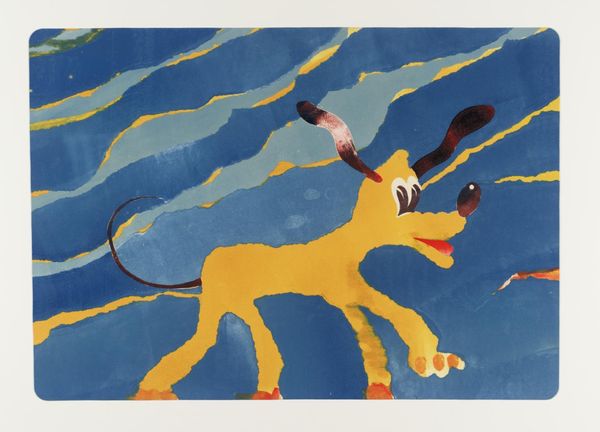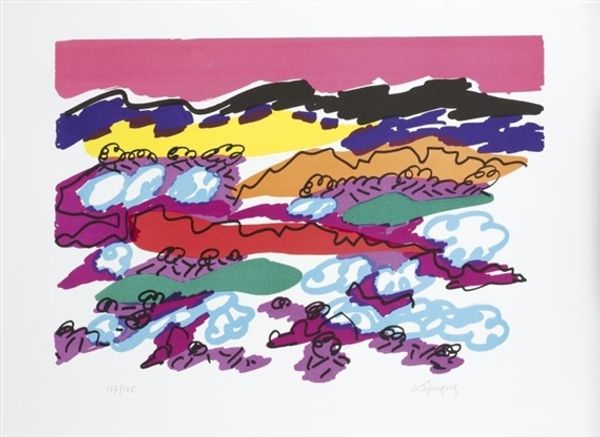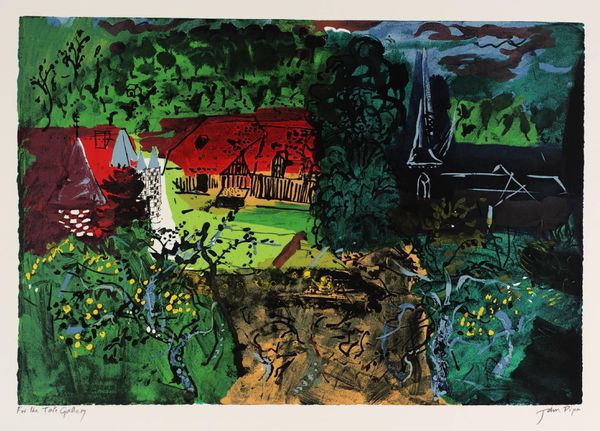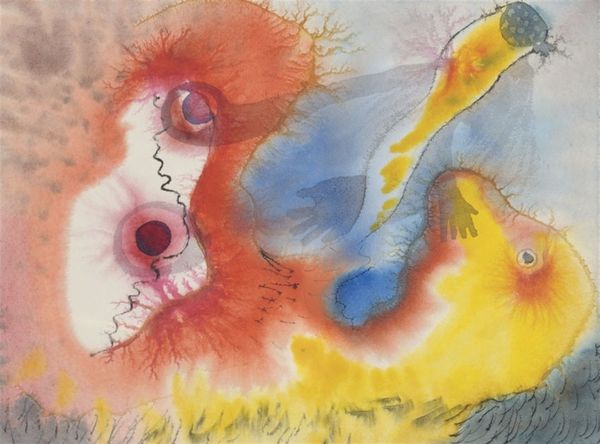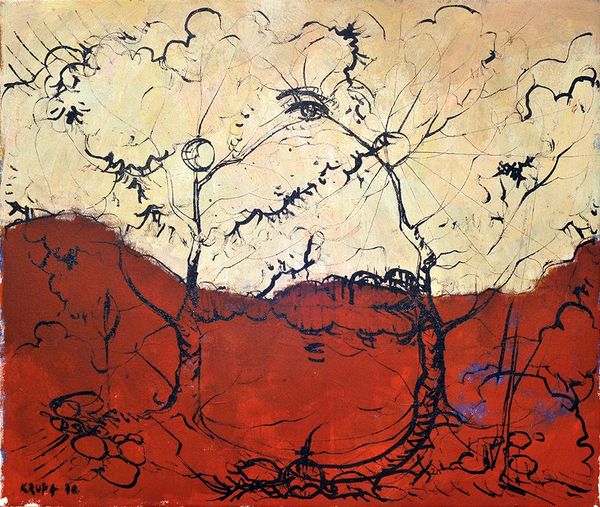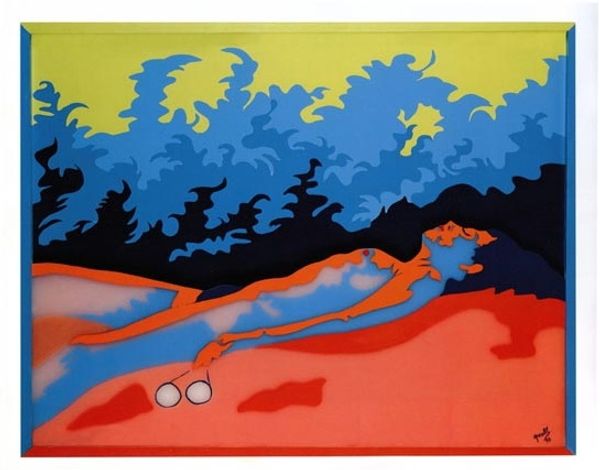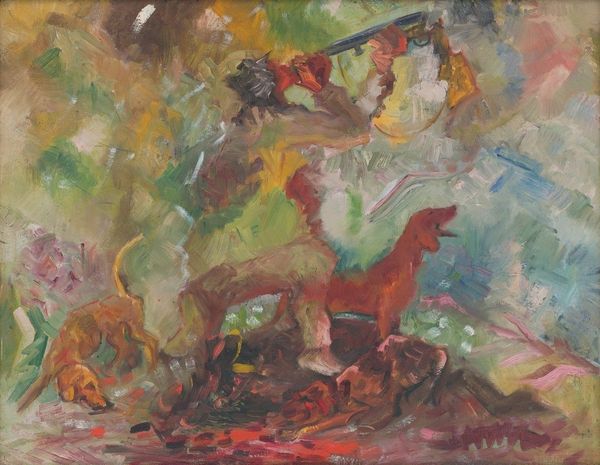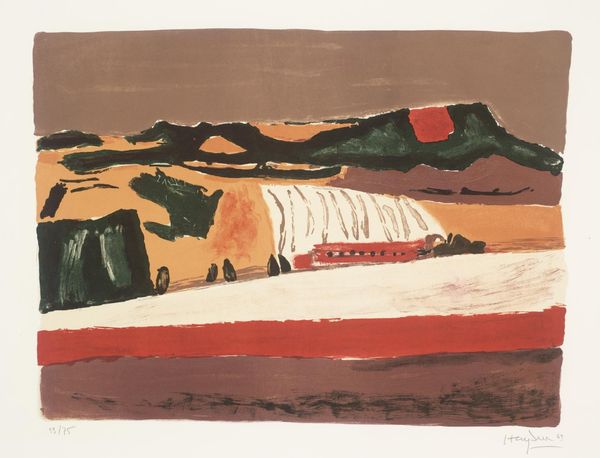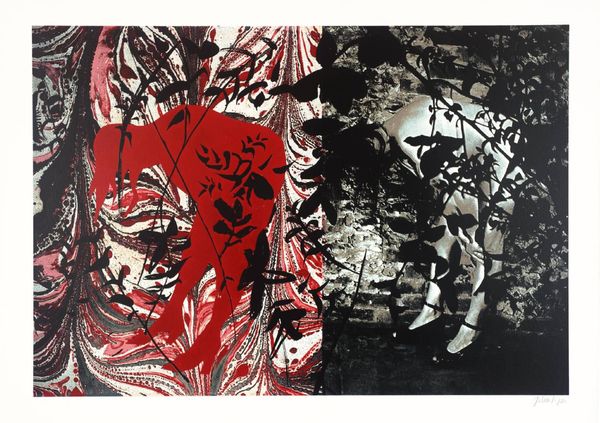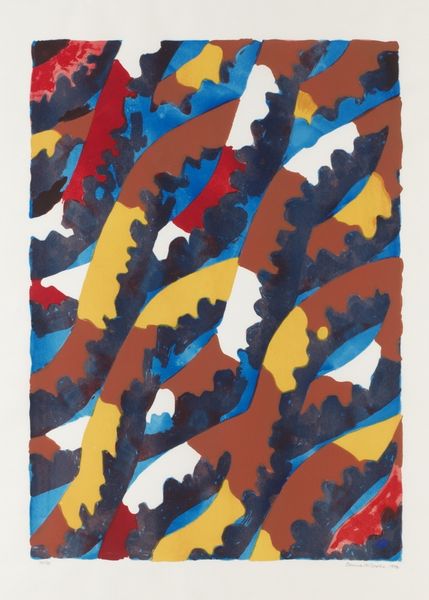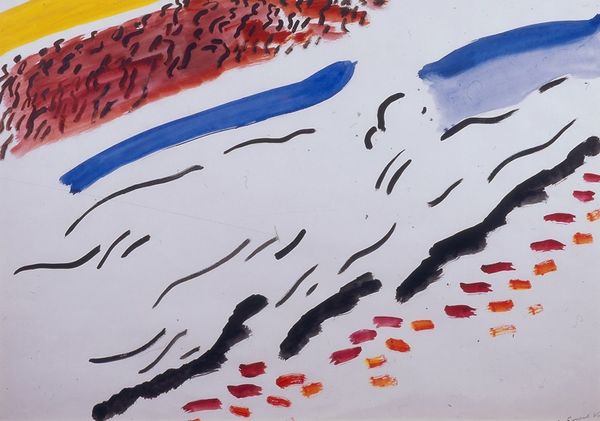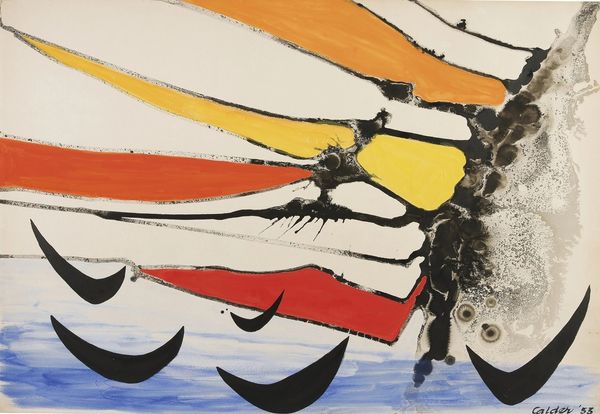
Copyright: Charles Lapicque,Fair Use
Editor: So, this is *La Matinée d'un seigneur* by Charles Lapicque, a screenprint from 1961. The tiger immediately catches my eye; it’s so bold against the abstract landscape. What is your take on it? Curator: I'm drawn to how Lapicque uses a seemingly benign landscape with an apex predator to hint at broader power dynamics. Consider the historical moment: 1961. The decline of European colonial empires was in full swing. Do you see any echoes of that shift in power? Editor: Hmm, that's interesting. I was just seeing colours and shapes. Now that you mention it, there's definitely something about the tiger almost camouflaged, like it's part of the landscape, yet poised for action. Curator: Exactly! And that's where contemporary theory becomes really useful. The landscape isn’t just pretty; it is symbolic territory, both geographically and politically. Lapicque is playing with the idea of who controls the terrain, right? How does the artist portray these subtle nuances of control, perhaps mirroring shifts in power after colonialism? Editor: That makes so much sense! I was seeing this beautiful, stylized landscape, but you've shown me there's a hidden narrative about control and changing power. I hadn't considered the social and historical context at all! Curator: Precisely. It reminds us that even seemingly simple visual works can have potent, deeply relevant commentaries on society if you look through an intersectional lens. What new questions does it raise for you? Editor: I think it makes me want to explore other artworks from that era with an eye to the political context. Thanks, that perspective really opened things up for me! Curator: And for me, it reinforced the vital role that new voices have in prompting established interpretations to evolve. Art should incite continual conversation.
Comments
No comments
Be the first to comment and join the conversation on the ultimate creative platform.
